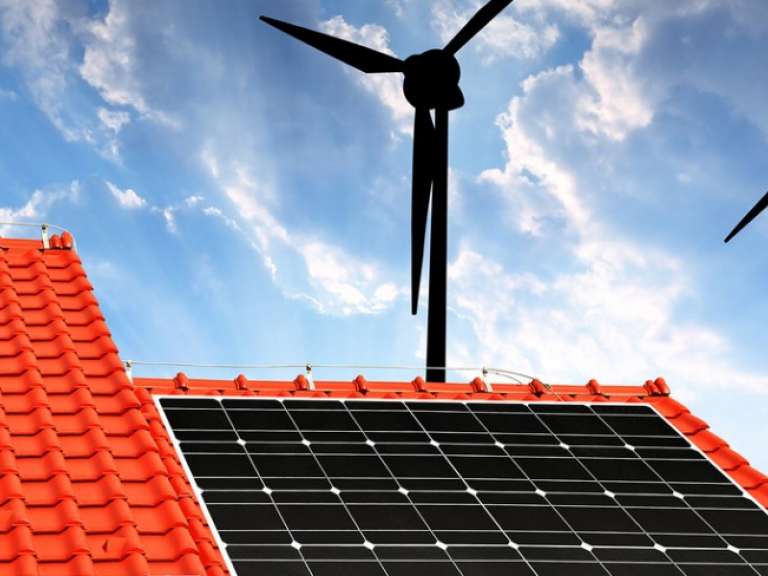How Distributed Power Generation Is Impacting Utilities
Robert RapierA dramatic increase in distributed power generation in recent years has utilities shifting the way they do business.

Distributed power generation (DG) was the norm prior to the 20th century. In 1882, Thomas Edison's coal-fired Pearl Street Station supplied power to 82 customers in New York City and was the typical model for early power stations. In 1900, 100 percent of global power generation added to the grid was from distributed power. By 1950, that number had fallen to 10 percent.
Two factors were responsible for this shift. The development of increasingly large industrial steam turbines made it possible to produce electricity at far lower costs. Then, around the end of the 19th century, alternating current began to eclipse direct current, becoming the standard for the United States power grid. This enabled power to be transmitted efficiently over long distances through power lines.
The economies of scale in the power industry, along with the ability to transmit power over long distances, resulted in a tremendous increase of huge, centralized power plants in the 20th century. Annual electricity generation in the US grew to nearly four quadrillion watt hours (petawatt-hours) by the start of the 21st century. Residential, commercial, and industrial power users relied primarily on centralized utilities for their power needs, and coal became the primary fuel for these utilities.
Even as the centralized utility structure grew, some customers—particularly industrial ones—found it advantageous to either produce their own power or supply their own backup power. These were mostly niche applications, however, that had little impact on the growth of the utility sector.
One of the first laws aimed at deregulating the monopolies of the public utilities was the Public Utility Regulatory Policies Act of 1978 (PURPA). Among other things, PURPA sought to create a market for distributed power generation. The National Energy Policy Act of 1992 created the outline for a competitive, wholesale electricity generation market. Order 888 in 1996 required utilities to make open access nondiscriminatory transmission services available.
Nevertheless, fossil fuels continued to be cheap and renewable power sources remained relatively more expensive. Centralized power production continued to grow steadily. However, that growth stalled shortly after the turn of the century. Against the backdrop of regulations aimed at making the utility industry more competitive, fossil fuel prices began to climb, and renewables like wind and solar power—aided by federal tax credits—began to become more competitive. The steep declines in the cost curves of wind and solar power led to an explosion of new installations. After 100 years of growth, electricity generation by utilities flattened.
A 2013 report by the Edison Electric Institute highlights challenges for utility companies. The report notes that the falling costs of distributed generation are potentially game-changing for centralized utilities. Citing a decline in the price of solar photovoltaic (PV) panels from $3.80/watt in 2008 to $0.86/watt in mid-2012, the report notes that solar prices are already competitive in 16 percent of the US market. Should a viable home battery storage technology become available, the report also notes that customers could begin to "cut the cord," as many have already done with conventional wire line telephones. This may, of course, be impacted by future state and federal energy policies regarding the power sector. Even in the absence of renewable-friendly legislation, however, these sources are likely to continue to make progress.
The rise of distributed generation has impacted utilities in a number of ways. Utilities are forced to integrate growing amounts of intermittent power sources into the grid. Over the past decade, wind and solar power have together increased capacity by an order of magnitude. The percentage of overall power supplied by distributed generation is still small. However, in places like Hawaii, where power prices are high, these intermittent or DG resources make up more than 10 percent of the overall power produced.
Hawaii leads the country in the penetration of residential rooftop solar photovoltaics (PV) and, as a result, has been at the forefront of challenges posed by integrating renewable DG into the grid. Growth rates are outpacing the capabilities of utility companies to manage customer PV interconnection integration issues. Hawaii Electric Light Co. has required interconnection studies in some cases, paid for by the consumer, to ensure grid stability. The concern was that the utility may have trouble responding quickly to rapidly changing solar PV output originating from many point sources. This could lead to destabilization of the grid and cause reliability issues.
Utilities are also adapting to this changing marketplace by shifting away from coal as a fuel source. Utilities are increasingly utilizing natural gas to complement intermittent renewables. Coal-fired power plants have been losing ground to faster ramping natural gas plants that can more quickly adjust to intermittent demands.
Finally, the business model for utilities may have to change to adapt to the increase in distributed power generation in the form of renewables. In many cases, utilities seeking continued growth have had to search for new sources of revenue.
Improving grid resilience in the US may involve input from ISOs, RTOs, and even lessons from abroad.
Retail electricity sales have flattened as distributed generation has gained in popularity. Utilities are searching for new sources of revenue in response.
Today's generating plants are undergoing a significant business transformation involving digital tools to manage risk and optimize fleet performance.